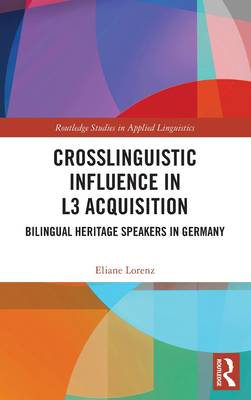
- Retrait gratuit dans votre magasin Club
- 7.000.000 titres dans notre catalogue
- Payer en toute sécurité
- Toujours un magasin près de chez vous
- Retrait gratuit dans votre magasin Club
- 7.000.0000 titres dans notre catalogue
- Payer en toute sécurité
- Toujours un magasin près de chez vous
Description
This book explores crosslinguistic influence in third language acquisition, drawing insights from a study of young bilingual secondary school students in Germany to unpack the importance of different variables in the acquisition and use of English as an additional language.
Lorenz draws on data from a learner corpus of written and spoken picture descriptions toward analyzing sources of crosslinguistic influence in L3 acquisition in bilingual heritage speakers with unbalanced proficiency in heritage versus majority languages as compared with their monolingual German peers. This unique approach allows for a clearer understanding of the extent of influence of access to heritage languages, the impact of being a "balanced" vs "unbalanced" bilingual speaker, and the importance of extra-linguistic variables, such as age, gender, socio-economic status, and type of school. The final two chapters highlight practical considerations for the English language classroom and the implications of the study for future directions for research on third language acquisition.
With its detailed overview of L2 and L3 acquisition and contribution toward ongoing debates on the advantages of being bilingual and multilingual, this book will be of interest to students and scholars in applied linguistics, foreign language acquisition, foreign language teaching, and learner corpus research.
Spécifications
Parties prenantes
- Auteur(s) :
- Editeur:
Contenu
- Nombre de pages :
- 256
- Langue:
- Anglais
- Collection :
Caractéristiques
- EAN:
- 9780367681210
- Date de parution :
- 29-11-22
- Format:
- Livre relié
- Format numérique:
- Genaaid
- Dimensions :
- 152 mm x 229 mm
- Poids :
- 535 g

Les avis
Nous publions uniquement les avis qui respectent les conditions requises. Consultez nos conditions pour les avis.






